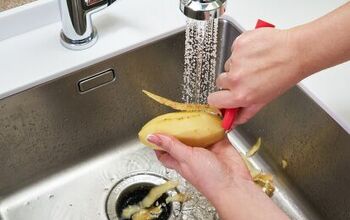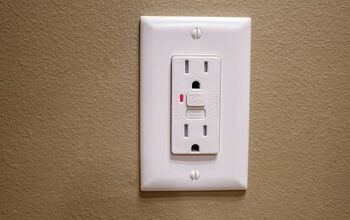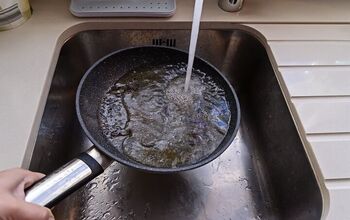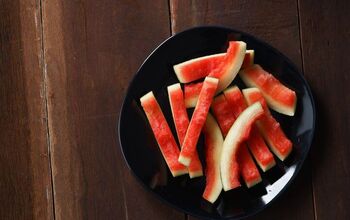What Is A Continuous Feed Garbage Disposal? (Find Out Now!)

Since the 1920s when garbage disposals were first invented, the continuous feed design has proven to be reliable and convenient. But what is a continuous feed garbage disposal exactly?
A continuous feed garbage disposal lets you add food waste to the chamber while the appliance is running. This is the most common and affordable type of garbage disposal available. There are several styles of continuous feed garbage disposals based on the size of the motor and appliance footprint.
Let’s take a closer look at this modern kitchen marvel that simplifies everyday life.
Do You Need Appliance Installation or Replacement?
Get free, zero-commitment quotes from pro contractors near you.

Parts of a Continuous Feed Garbage Disposal
A continuous feed garbage disposal has 11 main parts that work together to pulverize food waste.
- Stopper: The rubber stopper fits into the drain hole of your kitchen sink.
- Flanges: Two flanges secure the disposal to your sink.
- Hopper: Also called a grinding chamber, the hopper holds the food waste inside the disposal.
- Dishwasher Inlet: Waste water from your dishwasher flows through the inlet and into the disposal.
- Shredder: Commonly referred to as a flywheel, the shredder helps pulverize food waste.
- Impellers: Impellers are metal blades connected to the shredder with rivets and help break down food waste.
- Drain Chamber: Pulverized food waste moves into the drain chamber and out the plumbing drain pipe.
- Housing: The housing is the outer shell of the garbage disposal.
- Motor and Power Supply: The motor and power supply run the garbage disposal.
- Reset Button: The reset button is a safety mechanism that shuts off the unit when it overheats.
- Hex Bolt: The hex bolt on the underside of the unit is used to manually turn the flywheel.
How a Continuous Feed Disposal Works
Garbage disposals come in two basic styles – continuous feed and batch feed. Continuous feed means that you can add food waste while the unit is running. With a batch feed garbage disposal, you have to secure the stopper in the drain for the unit to operate. Therefore, you cannot add food waste while a batch feed disposal is running.
Using a continuous feed garbage disposal is easy. Run cold water from your faucet, and turn on the garbage disposal at the wall switch. Push food waste down the drain of your kitchen sink. If food gets caught on the baffle, use a sprayer to push int into the hopper. Never use your hand to put food into the disposal. When you are done with the food waste, turn off the disposal and water.
Pros of a Continuous Feed Disposal
Continuous feed garbage disposals have several advantages.
- Convenient: Being able to add food waste while the unit is running saves time.
- Compact Design: Continuous feed garbage disposals are more compact than batch feed units.
- Budget-Friendly: You can find a continuous feed disposal for every budget.
Cons of a Continuous Feed Disposal
There are some disadvantages for continuous feed garbage disposals.
- Safety: Risk of injuries and small objects falling into the chamber because the drain is open when the unit runs.
- Water Use: You have to run the water while using the unit.
Considerations for a Continuous Feed Garbage Disposal
Before you purchase a new continuous feed garbage disposal for your kitchen, you should consider motor size, type of food waste, and required cabinet space.
Motor Size
The motor size of a garbage disposal affects cost and usage. Garbage disposal motors are rated in horsepower (hp).
- 1/3 hp: Occasional use in homes of one to two people for soft foods
- 1/2 hp: Households with one to two people who use the appliance once or twice each week for soft foods and cooked meats
- 3/4 hp: Use twice per week in homes with three to four people for pulverizing vegetable waste, chicken bones, cooked meats, fruit pits, and raw meat
- 1 hp: Households with more than four people for daily use to process beef bones, cooked meats, fruit pits, vegetable peels, and cooked meats
Type of Food Waste
Consider the type of food waste that you want to put down your garbage disposal. The best rule of thumb is to choose a unit based on your typical food waste. Basing it on household size or how often you use it means more food waste in your trash.
Cabinet Space
Most garbage disposals measure 18” high and 11” inches across. Make sure to leave enough room for any cleaning products or other supplies that you store under your sink. You should leave about 5” in height and 3” in width, so the total space needed is 23” high and 14” wide. If space is an issue, you can find smaller models that fit into spaces of 16.5” high and less than 10” wide.
Related Questions
How do I connect my dishwasher to a garbage disposal?
Look for a continuous feed garbage disposal that has a dishwasher inlet. You connect the dishwasher to the disposal with a flexible plumbing tube.
Should I plug my garbage disposal into a GFCI outlet?
A GFCI outlet is not required for a garbage disposal. The unit is plugged into an outlet under your kitchen sink, and this is not considered a “wet” area. Using a GFCI outlet for your garbage disposal is optional.
Do You Need Appliance Installation or Replacement?
Get free, zero-commitment quotes from pro contractors near you.

Summary
Continuous feed garbage disposals are the most popular style. The units are easy to use, affordable, and compact. These types of disposals do have some downsides, such as safety concerns with an open drain during operation and water usage.
When you are ready to purchase a new continuous feed garbage disposal for your kitchen, you should first consider the motor size. It is best to choose a model with enough power to grind through your typical food waste. If your new garbage disposal doesn’t have enough power for your needs, more waste goes into your trash. Putting food waste into a disposal that is beyond what the motor can handle will damage the unit.
The third consideration is cabinet space. Most continuous feed garbage disposals require at least 23” in height and 14” in width. Smaller units need about 16.5” in height and 10” in width.

Jennifer L. Eggerton loves being hands-on, whether it's with a home DIY project, making repairs, re-decorating a room, or keeping life organized. She enjoys helping people by sharing her knowledge, insights, and experiences, as well as her lessons learned. In addition to her work as a writer, Jennifer is a Jeep® overlander, self-published author, and nature photographer who loves being outdoors.
More by Jennifer Eggerton




















![How To Reset A Whirlpool Cabrio Washer [In 5 Easy Steps!]](https://cdn-fastly.upgradedhome.com/media/2023/07/31/9076531/how-to-reset-a-whirlpool-cabrio-washer-in-5-easy-steps.jpg?size=350x220)






